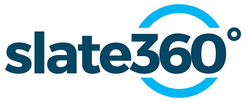Naturally Derived Fatty Alcohol Market is expected to reach US$ 5250.82 Mn in 2032, likely to surge at CAGR of 6.4% during Forecast Period 2022-2032
Fatty alcohols are aliphatic compounds derived from fats and oils naturally originating in plants and animals. Fatty alcohols are derived from fatty acids. They contain an even number of carbon atoms. They are colorless oily liquids or solid waxy substances. Due to their amphipathic nature fatty alcohols, act as non-ionic surfactants and widely used in cleaning products. Fatty alcohols can be used as emulsifiers, emollients and thickeners. Fatty alcohols are widely used into cosmetics, detergents, pharmaceutical, plastics, and other industrial products.
Naturally Derived Fatty Alcohol Global Market Trends and drivers:
The global naturally derived fatty acids market demand is primarily driven by increasing demand for naturally derived ingredients based soap and detergents and personal care products. However, increasing health and environmental concerns with regards to use of petrochemical based fatty alcohols is another major market driver for naturally derived fatty alcohols. To decrease carbon footprint, industries are focusing towards development of biodegradable naturally derived products and chemicals through bio-based raw materials.
Download Sample Copy @ https://www.futuremarketinsights.com/reports/sample/rep-gb-1882
Volatile prices of petrochemical based products raises concerns for chemical industry and has prompted chemical industry shift towards bio-based ingredients such as naturally derived fatty alcohols. Regulations from government agencies such as REACH related to environmental concerns associated with petrochemical-based products are expected to support the market trend for use of naturally derived fatty alcohols.
Increasing supply of sustainable raw material sources is expected to impact positively in market growth. Also increasing global consumer awareness coupled with increased hygiene product demand is expected to drive personal care industry growth and in turn, growth in naturally derived fatty alcohol market.
Naturally Derived Fatty Alcohol Market Key Players:
With the growing naturally derived fatty alcohol market, attracting new entries into the market and traditional manufacturers are also shifting towards bio-based products manufacturing. Some of the key players in naturally derived fatty alcohol market includes, BASF, Procter & Gamble, Sasol, Shell Chemicals, Ecogreen oliochemicals, Kao chemicals, Willmar oleo, Musim Mass, Emery Oleo, Oxiteno, Jiahua etc.
The report covers exhaustive analysis on:
- Naturally Derived Fatty Alcohol Market Segments
- Naturally Derived Fatty Alcohol Market Dynamics
- Historical Actual Market Size, 2013 – 2014
- Naturally Derived Fatty Alcohol Market Size & Forecast 2015 to 2025
- Naturally Derived Fatty Alcohol Market Supply & Demand Value Chain
- Naturally Derived Fatty Alcohol Market Current Trends/Issues/Challenges
- Naturally Derived Fatty Alcohol Players Competition & Companies involved
- Naturally Derived Fatty Alcohol Market Technology
- Naturally Derived Fatty Alcohol Market Value Chain
- Naturally Derived Fatty Alcohol Market Drivers and Restraints
Request for Report Customization@ https://www.futuremarketinsights.com/customization-available/rep-gb-1882
Naturally Derived Fatty Alcohol Market Segmentation
Naturally derived fatty alcohol market can be segmented on the basis of their sources as animal fats, tropical oils, soft oils, and other sources, on the basis of applications, and regions.
On the basis of sources naturally derived fatty alcohol market is segmented as
- fatty alcohols derived from animal fats
- tallow
- lard
- poultry
- fatty alcohols derived from tropical oils
- palm kernel oil
- coconut oil
- palm oil
- fatty alcohols derived from soft oils such as
- soya oil
- sunflower oil
- rape oil
- lastly fatty alcohols from other sources such as
- honeybee wax
- jojoba oil
- whale oil etc.
Naturally derived fatty alcohol market further segmented on the basis of its application
- cosmetics and personal care
- soap and detergents
- pharmaceuticals
- food & beverages
- textile and leather processing
- Others
Download the TOC of this Report: https://www.futuremarketinsights.com/toc/rep-gb-1882
Report Highlights:
- Detailed overview of parent market
- Changing market dynamics in the industry
- In-depth market segmentation
- Historical, current and projected market size in terms of volume and value
- Recent industry trends and developments
- Competitive landscape
- Strategies of key players and products offered
- Potential and niche segments, geographical regions exhibiting promising growth
- A neutral perspective on market performance
- Must-have information for market players to sustain and enhance their market footprint
About FMI
Future Market Insights (ESOMAR certified market research organization and a member of Greater New York Chamber of Commerce) provides in-depth insights into governing factors elevating the demand in the market. It discloses opportunities that will favor the market growth in various segments on the basis of Source, Application, Sales Channel and End Use over the next 10-years.
Contact:
Future Market Insights Inc.
Christiana Corporate, 200 Continental Drive,
Suite 401, Newark, Delaware – 19713, USA
T: +1-845-579-5705
For Sales Enquiries: [email protected]
Browse Other Reports: https://www.futuremarketinsights.com/reports
The post Naturally Derived Fatty Alcohol Market is Projected to Gain Revenues of US$ 5.25 Bn by 2032 | FMI appeared first on Future Market Insights.






